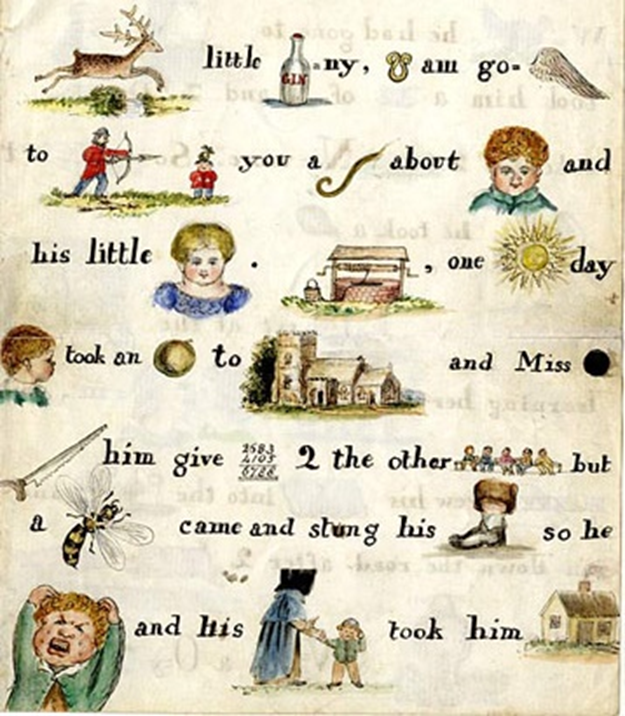
Definitions Deconstructed
Rebus
S. G. Lacey
A code or reference where pictures, letters, or symbols represent certain words or phrases. [REF]
The best way to explain a rebus is to use one. Review the combination of text and images below, then see if you can determine the intended meaning.
For those unfamiliar with the approach for solving a rebus, let’s break down this simple puzzle.
Start by converting the number “3” to the letters “THREE”. Next, interpret the minus sign, and subtract the letters “THE”, leaving just “RE”. Lastly, translate the vehicle image to the identifying word “BUS”. The answer is the subject of this post. “REBUS”.
Image-based rebus execution uses two main techniques. The first is simply substituting a known common word with a picture of the item, making for a very straightforward translation, like the bus icon above. For more complex terms, the phonetic sound of multiple images can be combined to sound out the term or phrase being expressed.
There are two main reasons to use a rebus, which are quite disparate from a methodology standpoint.
The first rebus application is conveying simple information between a pair of parties who don’t share a common verbal or written language; this approach can even work amongst individuals who are generally illiterate.
The second rebus usage is to conceal a hidden message, which can only be deciphered by a savvy counterparty with knowledge and wits; these cryptic pictorial challenges have been entertaining shrewd puzzlers for years.
The correct plural of rebus is rebuses. There are many ways to make words that end with “s” in the English language non-singular, many of which are decidedly odd, but that’s the subject of a separate post.
Related, the word “rebus” is itself an ablative plural of the Latin root “res”, or “thing”, thus translating directly to “by means of objects”. First coined at the beginning of the 17th century, and used most prevalently in French, this communication technique was known well before the official word became formalized. Most recently peaking in the 1870’s, usage of this term has been steadily on the decline in the modern lexicon.
A sequence of rebuses can be combined to create longer words, catchy phrases, or even entire sentences. For more complex rebus arrangements, where basic symbols aren’t sufficient to convey the message, supplemental numbers and letters are often utilized.
The first known rebus was inscribed in a clay cuneiform tablet roughly 5000 years, with an image of dried reeds swapped in for the similar sounding Sumerian word “reimburse”. While seemingly novel to substitute letters for images, this concept is apparently a natural form of human conveyance.
Early forms of rebus execution can be found incredibly far back in the record of humanity: Mesopotamian cave paintings, Egyptian hieroglyphics, Incan pottery, Chinese pictographs. These various cultures, hailing from throughout the world, all dating back before 1000 BC, frequently used recognizable symbols in their writing systems. Independently.
In fact, rebus principles can even be found in 3D form. A statue commissioned for Egyptian pharaoh Ramesses the Great, who ruled from 1279 to 1213 BC, highlights this technique. [REF]
While the work seemingly simply depicts the young Ramesses being protected from above by hawk god Horus, there’s a hidden double meaning. In the native tongue, combining “Ra” for the soaring solar deity, “mes” for child, and “su” for the plant stalk in the boy’s left hang, the title of the famous leader is spelled out phonetically.
As with many language elements, both the Greeks and Romans made substantial progress on pictures as a means of communication, in the form of detailed depictive artwork, which adorned churches, city centers, and clothing. Discrete coinage decoration also allowed subtle messages to be dispersed throughout the empire via natural commerce transactions.
The Middle Ages brought about another round of visual symbolism, which could be interpreted as rebus-like messaging. Family crests. Family names. Family shields. Family heirlooms. There were so many different plant, animal, and elemental heraldry linkages during this era that the Game of Thrones character breakdown seems simple.
During the Renaissance period, famous artists and sculptors often used suggestive elements, text, and imagery in their creations. The subject of interest, title of the work, or even the artisan’s own name, were all opportunities for secret cyphers. In many cases, these hidden messages were not discovered until decades later, when the true nature of each piece was revealed in the deceased’s diary.
The advent of the printing press, and consequential expansion of literacy, especially by women, led to an explosion of rebus puzzles, not just for the aristocratic elite, but also amongst commoners. During late 18th century England, ladies led the charge, using satirical rebus signage to bring societal equity issues to the masses, and created mixed picture and word books to facilitate education of unruly juveniles. [REF]
In 19th century England, acronym abbreviations became a clever way to communicate secret, sometimes undesirable, messages, like the classic “IOU” with regards to debts owed.
20th century America brought about the advent of automobiles, and subsequently tacky vanity plates, like “CU L8R” and “NEED 2P”.
Now, just a quarter of the way through the 21st century, the entire world is hooked on word contractions, especially the younger generation, via “LMFAO”, “TTYL”, or the ubiquitous “OMG” cell phone texts.
One realm where rebus puzzles have continued to be used in a clever manner is for consumer merchandising, especially on disposable goods sold in cheap packaging. Often, the message is hidden, at the bottom of a soup bowl, printed on the flap of a cigarette pack, or deep inside a cereal bag, to encourage rapid product consumption.
This novel marketing trend continues to this day. For those of a certain age, who spent many of their formative years hindering brain functionality, there’s an unlikely rebus source. Printed underneath the cap of a shapely Mickey’s 32-ounce green glass beer bottle.
Many a night in college has been spent drunkenly deciphering these challenging puzzles, some of which turned out to be quite difficult, considering the limited circular surface area available for pictures, obscurity of the sayings being communicated, and diminished mental capacity. Try your hand at a few of Mickey’s best rebuses from their website as listed below. [REF]
If you can’t find a Mickey’s at the local convenient store, no worries. There are nearly a dozen other American beer brands that experimented with similar “crown ticklers” over the years, including Ballantine, Lone Star, National Bohemian, Olympia, and Rainier. With this trend peaking in the 1980s, many of these symbolic metal tops are now collectors’ items.
Amusingly, the rebus as means of visual communication has now come full circle, in electronic form. A simple text emoji, which can be used to convey any sensation or sentiment, with just a couple pixilated pictures, sometimes augmented by a few abbreviated letters.
While there seems to be a different colorful yellow face icon for nearly every feeling these days, there’s still something uniquely clever about the OG emoticons. It’s amazing how much information can be conveyed through a short string of keyboard characters. [REF]
Below are a few additional clever rebus puzzles which emerged from this research. The full collection of 28 literary rebuses, which only leverage letters and colors, is also linked. Enjoy the mental stimulation. [REF]
Long Time, No See.
But, On Second Thought.
Green With Envy.
Summer.
Go Up In Smoke.
Safety In Numbers.
Trail Mix.
Research:
Thorough history on the evolution of rebus puzzles over time. [REF]
Rebus word etymology. [REF]
Old English short stories which heavily leverage rebus symbolism. [REF]
Rebus list of varying skill level which can be zoomed in on, and have answers at the bottom. [REF]












